Affiliate links on Android Authority may earn us a commission. Learn more.
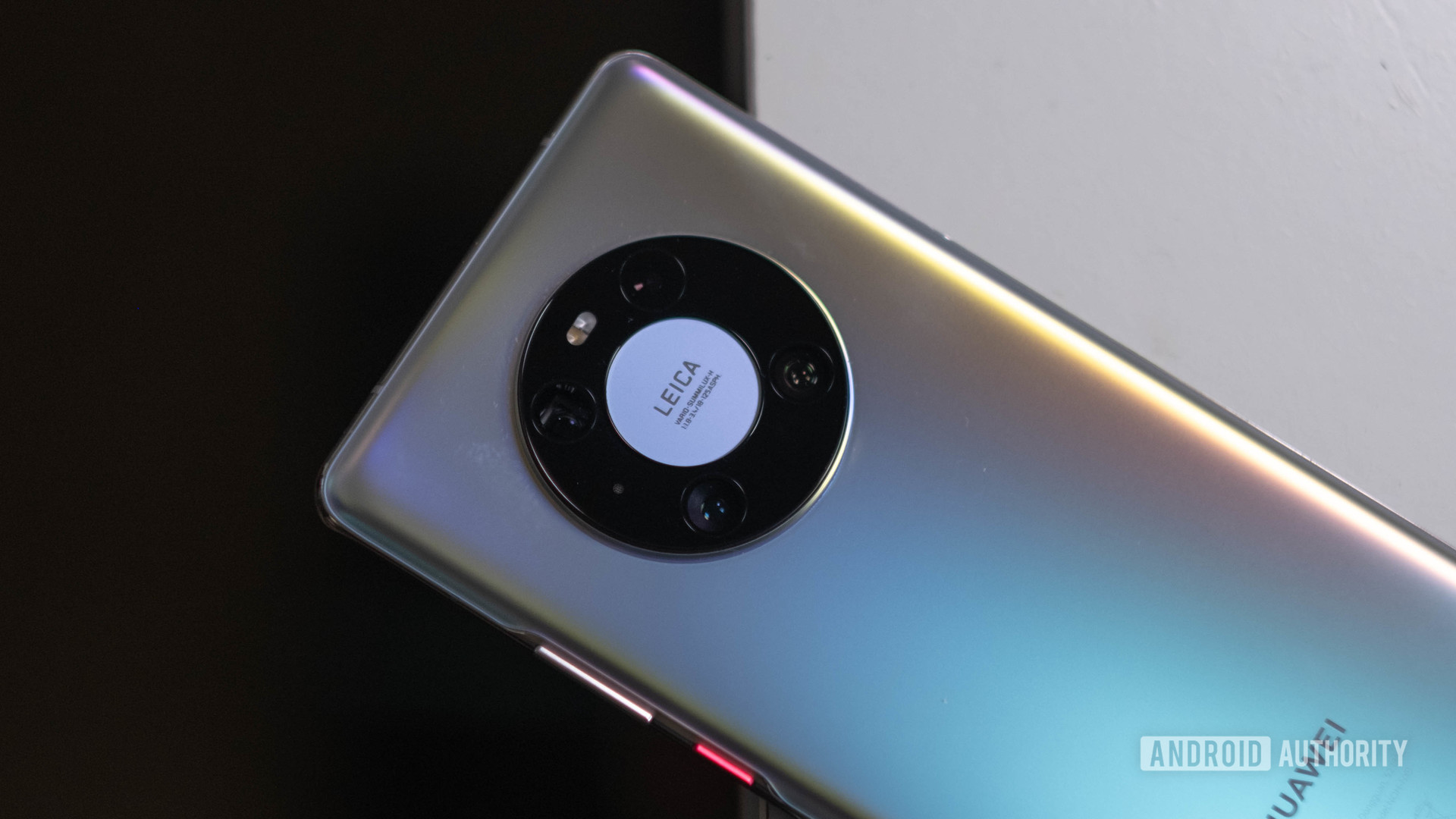
Huawei Mate 40 Pro
What we like
What we don't like
Our scores
Huawei Mate 40 Pro
We called the HUAWEI Mate 30 Pro the forbidden fruit in 2019. It was an unapologetically luxurious flagship device with all the bells and whistles. However, it crucially lacked Google services and simple access to numerous popular apps. The competition has only toughened since then, while HUAWEI’s position in the industry has got even more precarious, due to the US government ban. Has HUAWEI produced an even better flagship for late 2020 in spite of the adversity? Find out in Android Authority’s HUAWEI Mate 40 Pro review.
Read all about the HUAWEI ban here: The HUAWEI ban: Everything you need to know
Update, April 2021: Added context to the current flagship market by comparing to 2021 smartphones.
HUAWEI Mate 40 Pro review: Who is this phone for?
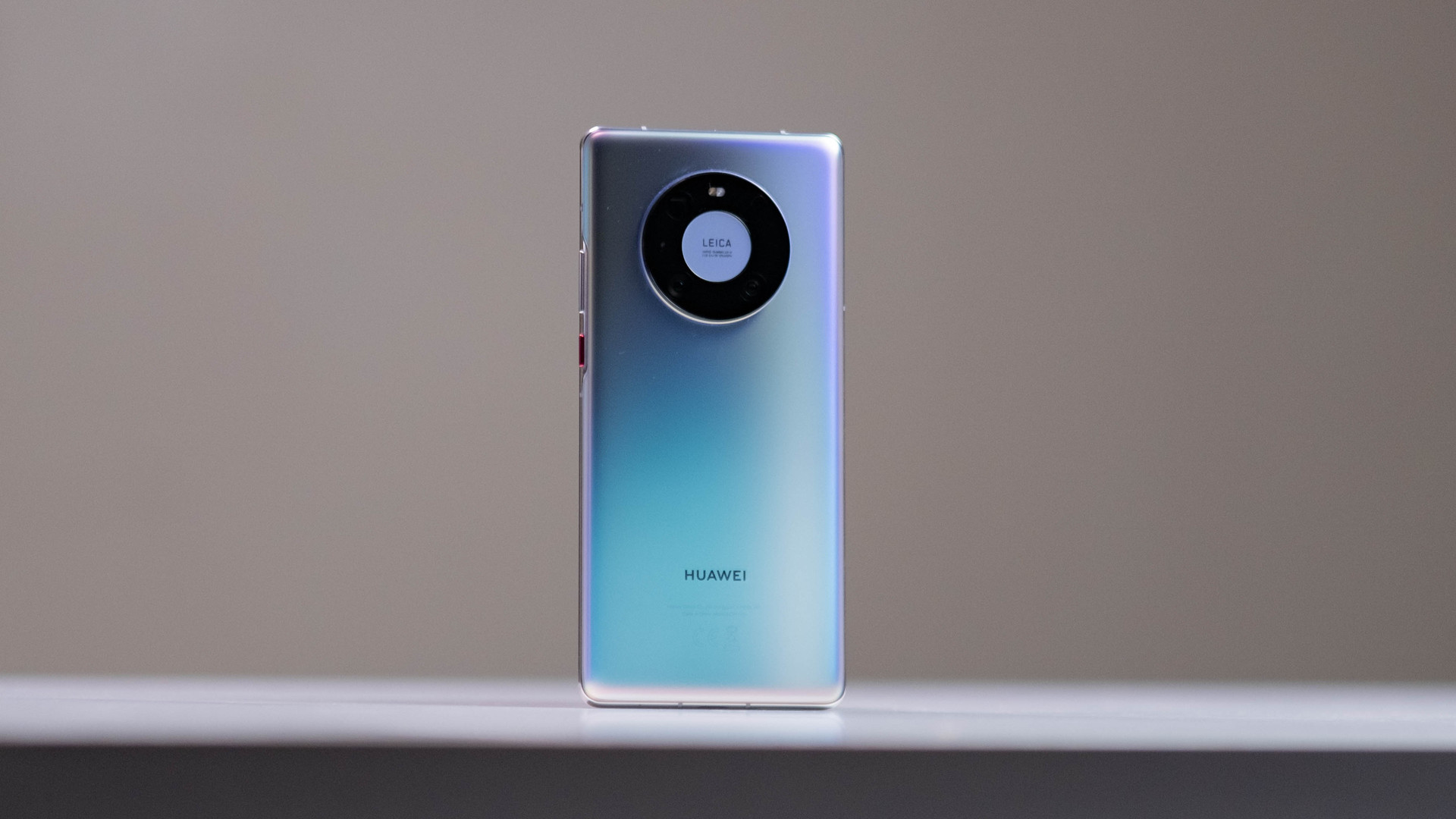
The HUAWEI Mate 40 Pro is for those who aren’t dependent on the Google ecosystem. This means Google apps like Gmail and Maps, but also the myriad of third-party apps that rely on Google’s Play Services infrastructure to work. Put in other words, Mate 40 Pro buyers should be prepared to live without any given app or jump through hoops to make it work.
The Mate 40 Pro isn't for the faint of heart.
Apps situation aside, the HUAWEI Mate 40 Pro is the quintessential flagship smartphone. It’s a device for those who want one of the best smartphone experiences and are willing to pay for it. The Mate 40 Pro has top-shelf performance, powerful cameras, extended battery life, and robust, premium-feeling construction. At £1,099, this smartphone is not for the faint of heart.
Design: Balancing beauty and toughness
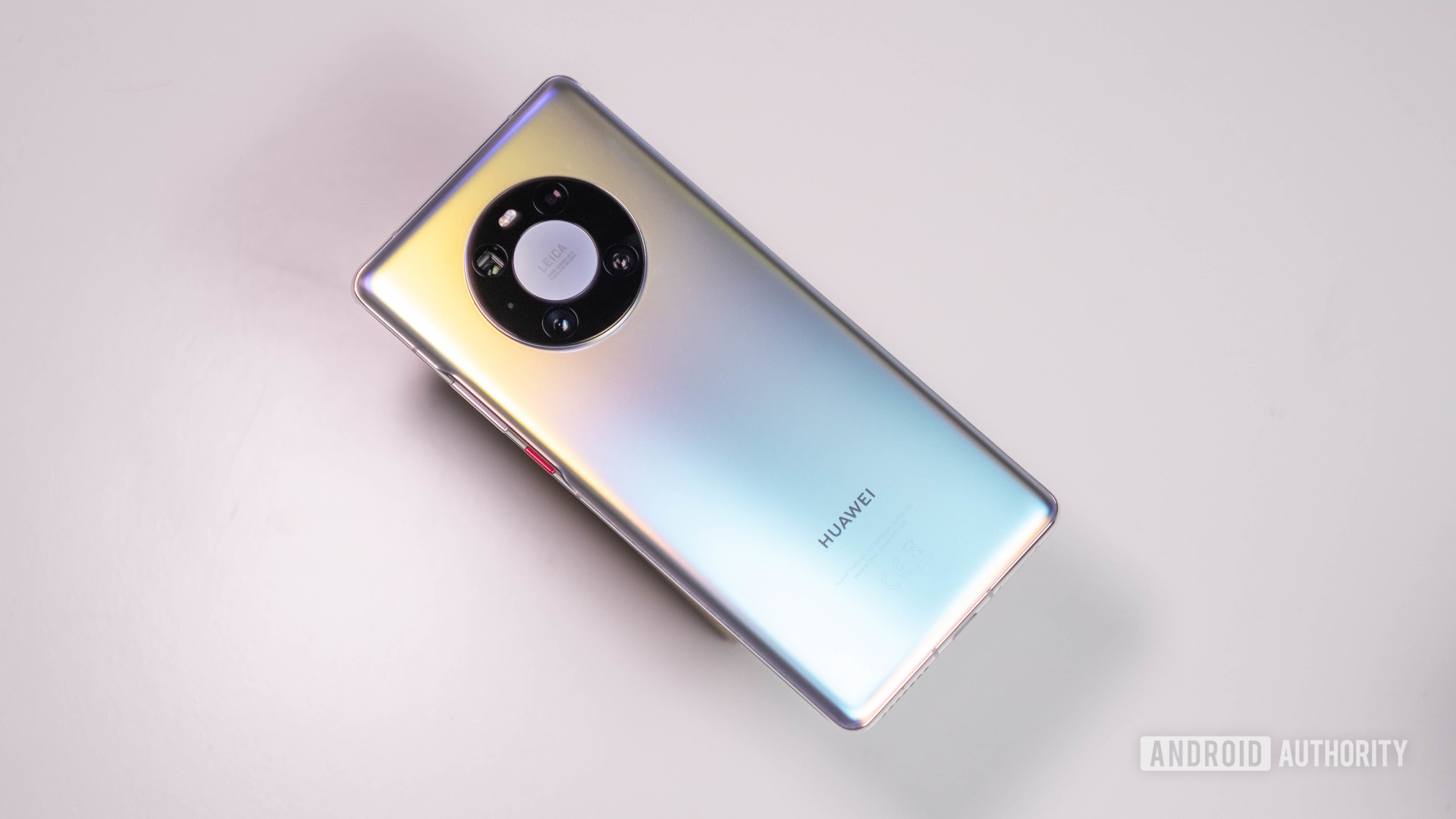
- 162.9 x 75.5 x 9.1mm
- 212g
- IP68 water and dust resistance
- Glass and metal build
- Optical in-display fingerprint scanner
- Stereo speakers
The HUAWEI Mate 40 Pro’s distinctive looks help it stand out from many of the cookie-cutter devices out there. On the front, instead of the typical single-camera cutout, HUAWEI has gone for a larger, pill-shaped punch hole. Similarly, the circular rear camera bump on the back stands out in a sea of domino-shaped modules found on many phones in the category, including HUAWEI’s own P40 Pro.
The curved glass edges on both front and back contribute to a sleek, elegant-looking device with thin bezels and minimal rails. We have the Mystic Silver model, which gives off different colors in different lighting conditions. It looks great, but it can be slippery at times.

Taking a tour of the device, the rear presents the large, circular camera bump. On the front is the large 6.76-inch screen with a sizable punch hole in the top left-hand corner. The left side is bare. On the right side, thankfully, there is a red power button and a separate volume rocker. I say that because the Mate 30 Pro had an awkward software implementation for its volume rocker that didn’t work nearly as well as these physical keys. There’s a speaker, an IR blaster, and a microphone on the top. Finally, the bottom features a USB-C port, a speaker, a microphone, and a dual SIM tray.
The Mate 40 Pro feels substantial in the hand. Its thin bezels somewhat make it feel more compact than it is, though not completely. The thin rails are rather grippy, but there’s not much to them so you end up touching the screen often. However, despite the waterfall display, I had no unwanted touch issues in my eight days with the device, meaning palm rejection is on point.
The Mate 40 Pro’s haptics are crisp and tight, but not quite at the level of the iPhone’s Taptic Engine. Thankfully, the in-display fingerprint scanner is plenty fast and accurate. HUAWEI also offers a secure face-unlock option, that can be enabled in the Mate 40 Pro’s settings menu. It’s better than other face-unlock implementations due to its use of 3D scanning instead of just relying on the selfie camera.
The Mate 40 Pro looks unique and feels premium.
This face-unlock option is made possible due to the dual cameras in the large pill-shaped cutout in the Mate 40 Pro’s screen. Unfortunately, to fit the two sensors in, HUAWEI has had to expand the punch-hole to be much larger than those found on the competition’s displays. It eats up a lot of room in the top left and can be a distraction.
The grilles at the top and bottom of the Mate 40 Pro output audio for a stereo effect. The sound signature is clear and loud, though unfortunately lacks bass. There’s no headphone jack present on the Mate 40 Pro, but the device does come with USB-C earbuds in the box.
Display: All you need, nothing more
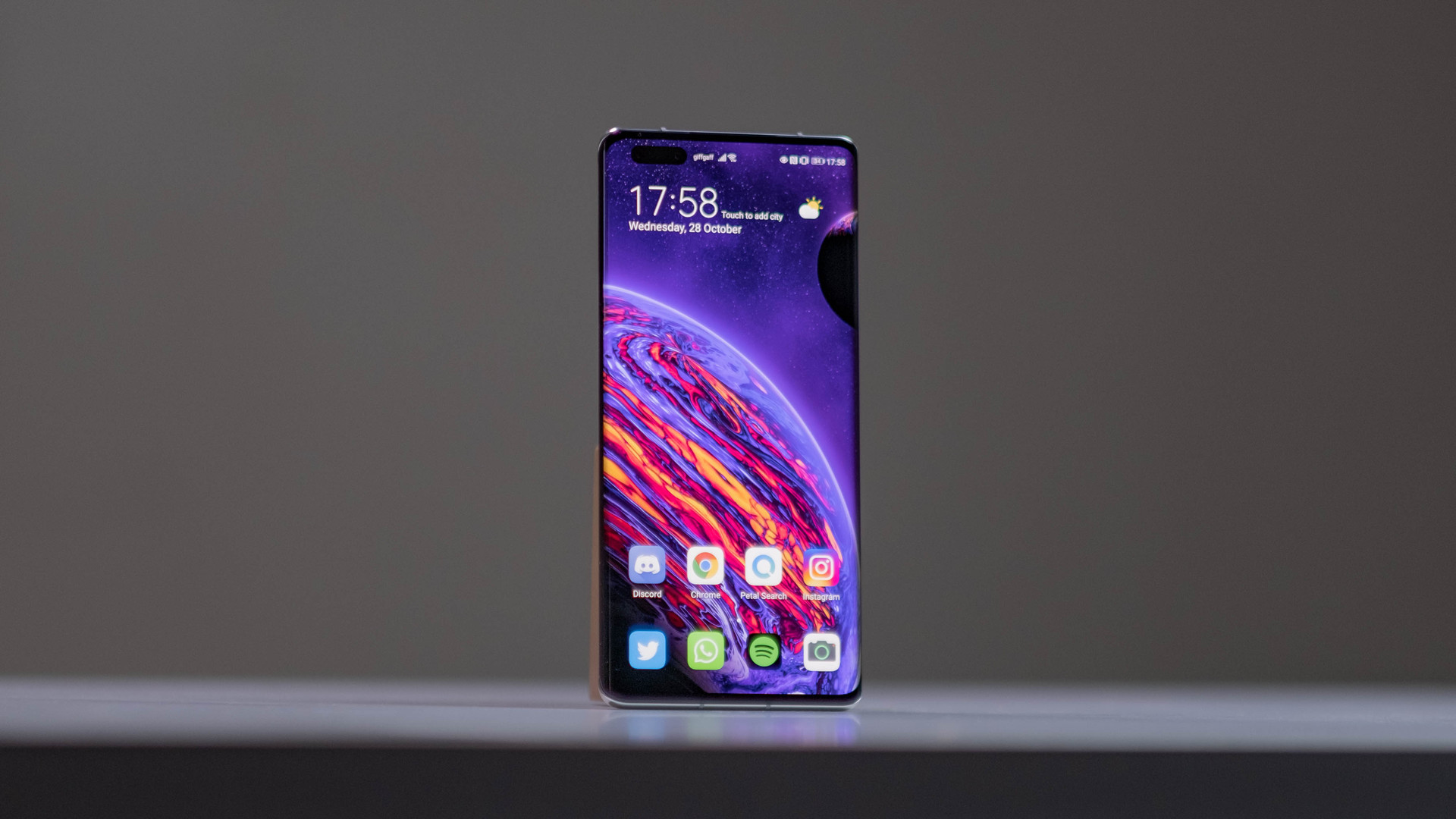
- 6.76-inch Full HD+
- 2,772 x 1,344 pixels
- Flex OLED
- 90Hz refresh rate
- 240Hz touch-sense rate
If anything, the Mate 40 Pro’s display stands out the most for not excelling. In a market full of 120Hz displays, it seems odd that HUAWEI decided to go for a 90Hz panel for its flagship device. Sure, it’s got a 240Hz touch-response rate which helps it feel zippy. However, it doesn’t feel as quick as a 120Hz panel. The Mate 40 Pro doesn’t have the most pixel-dense panel either.
Huawei's 90Hz panel feels lukewarm compared to the competition's quicker and sharper displays.
The large panel gets plenty bright, at 476 nits sustained peak brightness in our testing. It’s not a chart-topper, but I found outdoor viewing to be acceptable across most of the screen. Unfortunately, the curved edges on either side provide unwanted glare in direct light. I found top lighting sources, such as those found in the average home, to be particularly frustrating in this regard.
Out of the box, the Mate 40 Pro ships in its “Normal” mode which leans towards warmer tones. The other main option is “Vivid” which leans more towards cooler tones. Below those two options, HUAWEI allows you to adjust the color temperature of the screen manually with warm and cool tones as well as the full color spectrum.
The HUAWEI Mate 40 Pro’s display suffers from a certain degree of brightness and color shift when viewed off-axis. This means that when you view the display at an angle, you will notice it becoming darker with slightly different colors. This isn’t particularly distracting. When viewing straight-on, the curved edges create a shadow effect. These weren’t hugely distracting in day-to-day usage, though.
Performance: CPU champ
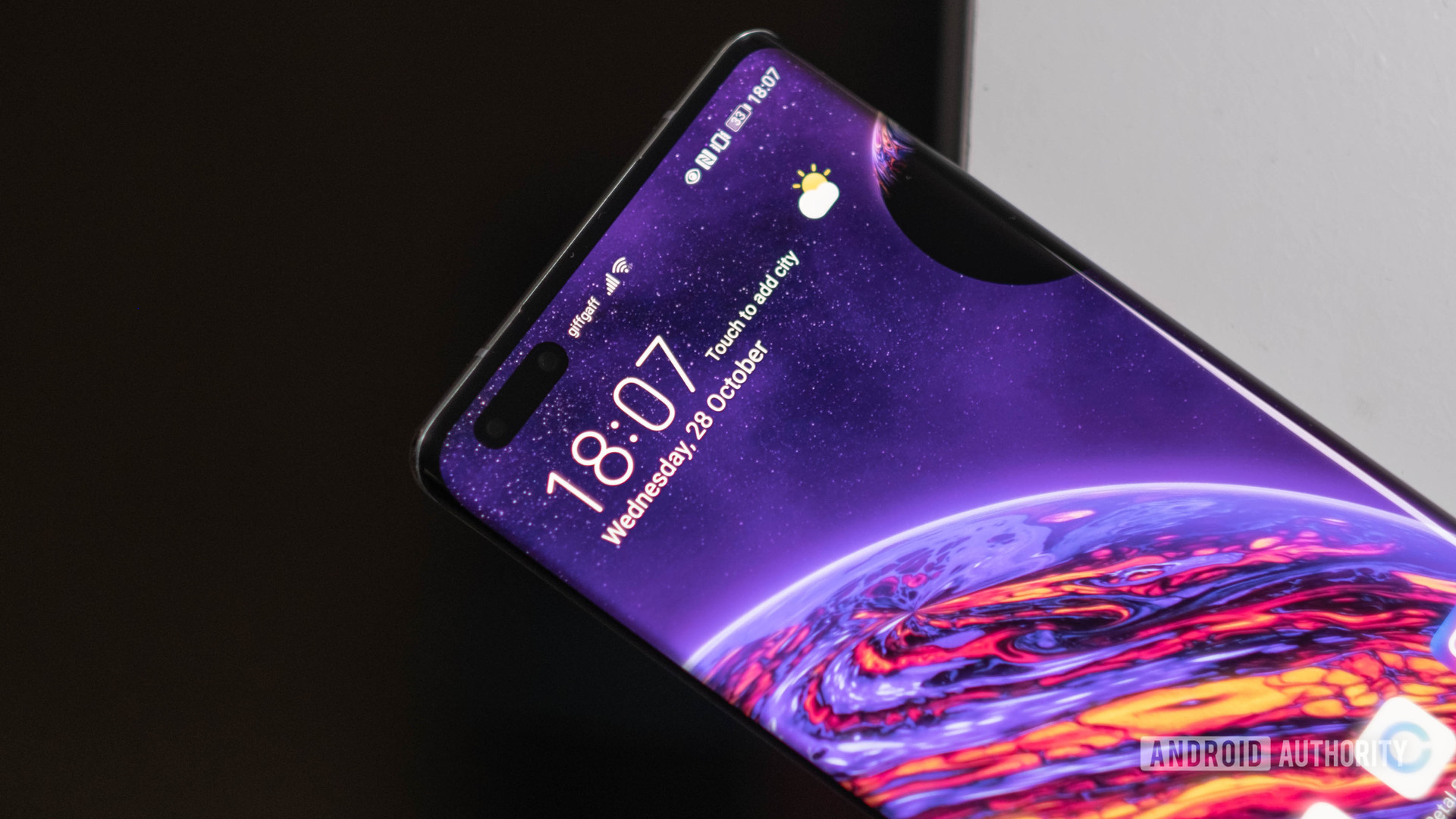
- HUAWEI Kirin 9000
- 8GB RAM
- 256GB storage
The Kirin 9000 chip powering the Mate 40 Pro is a beast of a chipset, at least when it comes to its CPU. It was the industry’s first 5nm chipset with a built-in 5G modem. The smaller processor and the integrated model should aid in both battery life and speed. In terms of CPU performance, the Kirin 9000 can hang with the competition. However, in GPU performance, the Kirin 9000 still can’t match its Qualcomm counterparts, especially Snapdragon 888-toting phones.
2021 SoC showdown: Snapdragon 888 vs Exynos 2100 vs Kirin 9000 vs Apple A14
In real-world usage, the slight GPU disadvantage compared to Qualcomm’s chips doesn’t stop the HUAWEI Mate 40 Pro from being a gaming machine. I tested the Mate 40 Pro in Real Racing 3, Fortnite, and a handful of 2D titles. All the tested games ran buttery smooth with very few hiccups. Gamers won’t be disappointed by the Mate 40 Pro’s performance.
In my eight days with the Mate 40 Pro, I found no reason to complain about performance. The phone delivered a lag-free experience, which is to be expected given the hefty 8GB RAM and powerful Kirin 9000. There’s only one storage option, 256GB, which is plenty for most people. For those who need more, HUAWEI has included a Nano Memory slot. HUAWEI’s own media cards tend to be more expensive than the more common microSD cards.
Battery: Fast and dependable
- 4,400mAh battery
- 66W SuperCharge wired charging
- 50W SuperCharge wireless charging
The HUAWEI Mate 40 Pro’s 4,400mAh cell is 100mAh smaller than that found in its predecessor. However, don’t confuse this slight capacity shrink for poor battery performance. The Mate 40 Pro provided more than a day’s usage on a heavier day, which would include 30 minutes of video consumption, high brightness, lots of camera use, a mix of LTE, Wi-Fi, and Bluetooth connections. With lighter use — four hours of screen on time — I saw around two days of battery life.
The Mate 40 Pro has performance and power-saving modes that can be toggled on and off in the battery menu. The former will optimize settings to give the best performance possible. The latter will limit background activity and disable 5G, Always On Display, and auto-syncing to maximize battery life.
The Mate 40 Pro delivers superb longevity.
Huawei’s included SuperCharge 66W charging brick is simply rapid. In fact, it’s one of the fastest on the market, handily beating competing products from Samsung or Apple in this regard. It charges the device from cold to 100% in just 47 minutes. Unfortunately, we weren’t able to test the 50W wireless charging since we didn’t have HUAWEI’s wireless charging pad. HUAWEI’s reverse wireless charging is limited to 5W, making it more suited to charging accessories like earbuds and smartwatches as opposed to other smartphones.
Software: Late to the party
- Android 10
- EMUI 11
EMUI 11 isn’t massively different from EMUI 10. In fact, they seem cosmetically identical. A few notable additions to EMUI 11 include revised and beefed-up Always-On Display options. Floating windows are now available for more versatile multi-tasking too. HUAWEI also introduced a slew of air gestures that allow you to control the phone without touching it.
EMUI is far from stock Android, with its own aesthetic and layout, along with a handful of added features. Features like Smart Remote let you use the build-in IR-blaster to control your AV equipment. Find Device allows you to track your phone using HUAWEI’s online services in case you lose it. Health is HUAWEI’s comprehensive health-tracking tool.
EMUI 11's standout new features are the new Always-On Display options.
Unfortunately, probably due to the ongoing HUAWEI trade ban, EMUI 11 is based on the now-outdated Android 10 operating system version. This means that the Mate 40 Pro’s software is lagging behind the latest Android release out of the box. It doesn’t look like that issue will be solved anytime soon either. That said, being stuck with Android 10 seems a tame sacrifice to make when your phone can’t access the Play Store.
HUAWEI Mate 40 Pro doesn’t come with Google services or Google apps pre-installed. There’s no official way to install Google’s services on the phone, either. YouTube, Google Maps, Gmail, and other Google apps won’t run on the Mate 40 Pro. This means you’ll be reliant on HUAWEI’s own App Gallery app store or third-party APK repositories to install your applications.
Continue reading: Everything you need to know about EMUI 11
For the entirety of my time with the Mate 40 Pro, I used HUAWEI’s included Petal Search app to find and install my apps. I found this tool much easier to use than App Gallery, as Petal Search curates links from both App Gallery and third-party APK websites to give you the best options. Nevertheless, it wasn’t foolproof. There were a few apps that wouldn’t run without Google services, such as NFS No Limits and Pokémon Go. However, for a large chunk of the apps that I rely on day-to-day, Petal Search worked well.
Camera: Simply fantastic
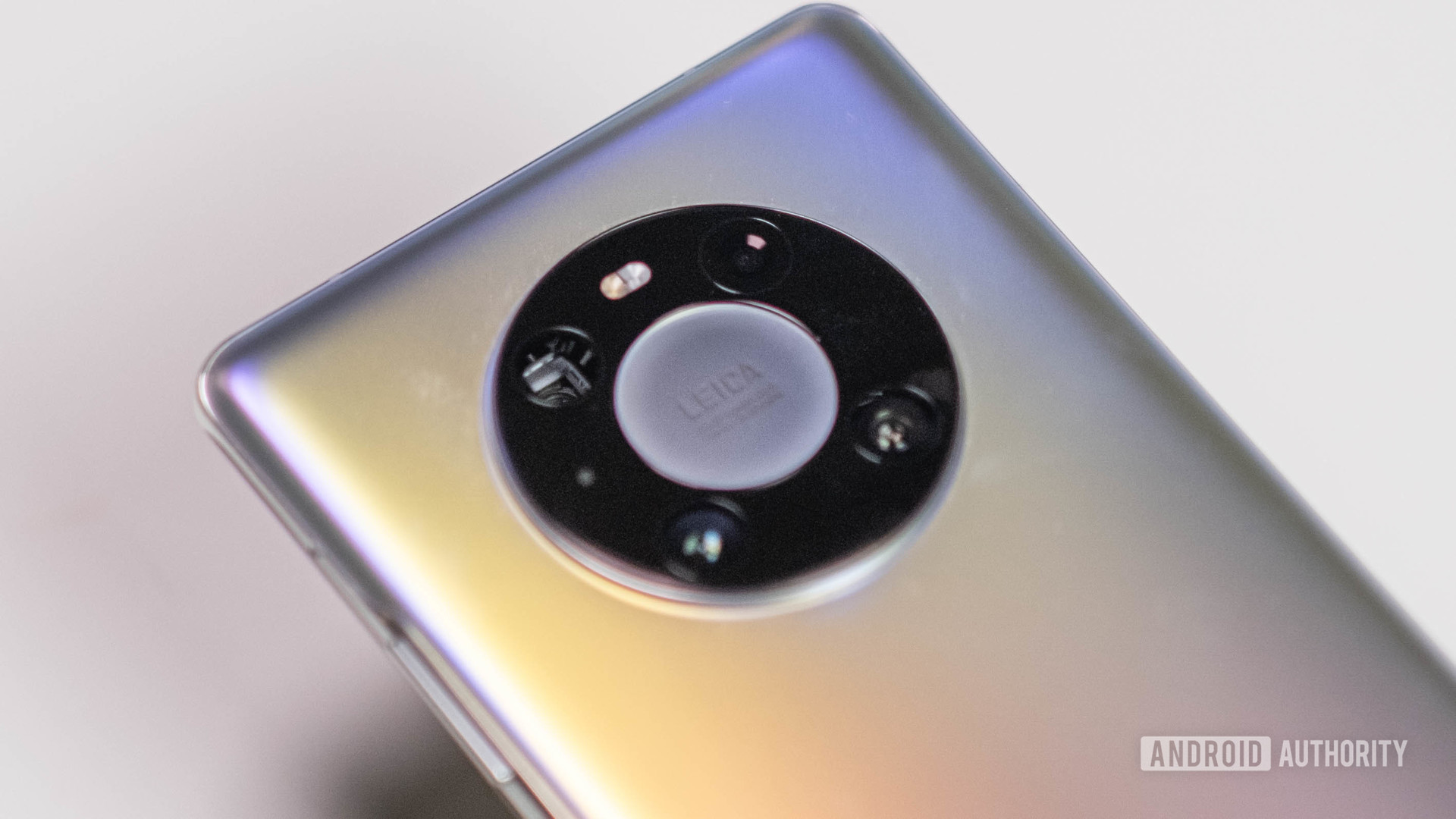
- Rear:
- 50MP, f/1.9, 23mm, RYYB, OIS
- 20MP ultra-wide, f/1.8, 18mm
- 12MP 5x periscope zoom, f/3.4, 125mm, OIS
- Video:
- 4K 60fps, 720p 3840fps
- Front:
- 13MP, f/2.4
- Video:
- 4K 60fps
HUAWEI has taken the P40 Pro’s excellent core camera setup, centered on a huge 50MP RYYB 1/1.28-inch sensor, and tweaked it for the Mate 40 Pro. The camera systems are not identical between the two phones though — on the Mate 40 Pro, the ultra-wide and selfie camera’s resolutions have been cut down, for instance. However, the decreased resolution doesn’t mean you should expect poor image quality from the Mate 40 Pro’s cameras.
See also: The best camera phones you can get
The main camera captures punchy images with lots of contrast and plenty of saturation. Images look sharp and detailed with heaps of dynamic range, despite the more contrast-heavy processing. I experienced some focusing issues with the main camera at times. The Mate 40 Pro would struggle to gain focus on smaller objects in the frame where other phones would succeed. It wasn’t all the time, but it was off-putting.
Huawei’s 20MP ultra-wide camera gives you a good amount of extra field-of-view over the main camera. It does well to maintain color and contrast characteristics when switching between lenses, though not completely. The ultra-wide lens’ images are noticeably softer than the main camera, but not soft enough that I’d avoid taking photos with it.
Huawei’s 5x optical periscope zoom lens provides pleasing images, though is far from the quality of the other two cameras. In low light, there’s a lot of noise reduction, which results in a watercolor effect. This becomes far more noticeable when you zoom in. Given plenty of light, the 5x lens shines. Sharpness is respectable and the colors were accurately captured. This lens would come in handy at a sports game or a venue in which you’re far from the subject.
Portrait mode shots have a pleasing focus roll-off, similar to what a DSLR or mirrorless camera would provide. This makes portrait photos look natural and realistic. The portrait mode allows you to change the shape of the bokeh. In the below photos, you’ll find both circular and swirl bokeh options. HUAWEI’s aperture mode gives you control over the simulated bokeh effect. You can change the virtual aperture between f/0.95 and f/16 to get more or less blur in your shots.
Edge detection isn’t always great. In some of these shots, you’ll see the camera getting confused with the background. This is a shame given there’s a whole sensor dedicated to depth on both front and back. However, eight times out of ten, the Mate 40 Pro gets it right. And when the system does get it right, portrait and aperture images look fantastic.
The Mate 40 Pro's camera is a superb package.
The HUAWEI Mate 40 Pro’s cameras can see in the dark. I took some photos of the stars on a beach in the middle of the night and the device captured them pretty well, albeit with some artifacts. This is particularly challenging as the phone needs to distinguish stars from noise, which it does here rather well. This shot of a factory at night showcases the device’s ability to capture lots of light. The below shots were taken in some of the harshest possible conditions.
The main and ultra-wide cameras do well in low-light, though you need to keep completely still to get a sharp shot. However, the 5x zoom is simply a crop in on the main sensor when light drops below a certain level. This is why the below 5x parking lot shot is so blurry compared to the 5x gas station shot further up. With a little bit of illumination even at night, the Mate 40 Pro’s camera was able to utilize its dedicated zoom hardware.
The Mate 40 Pro’s 13MP selfies are pretty good. There’s a good amount of dynamic range, sharpness and color. Nevertheless, there are some denoising artifacts in very low-light conditions, which can make for unnatural-looking images. Given more light, the Mate 40 Pro’s selfie camera performs much better, with samples showing virtually zero artifacts.
The Ultra-Vision selfie camera allows you to take images in ultra-wide and standard field of view images with very few quality discrepancies since they come from the same camera. This is handy for if you want to get multiple subjects in your selfies. This field of view adjustment is also available in selfie videos.
The HUAWEI Mate 40 Pro’s Ultra HD 4K 60fps video is pretty good. It’s smooth, vibrant, and has quite a bit of contrast. There’s plenty of dynamic range, and the mixture of OIS and EIS creates jitter-free footage. There is some unnatural movement as the OIS moves to counteract hand motions, but this is only noticeable when you’re walking or moving awkwardly. In low light, there’s some skin smoothing at play in the selfie video which looks rather odd, but in daylight, this isn’t an issue.
As an overall camera package, the Mate 40 Pro’s setup is up there with the best of the best. It takes fantastic photos and videos with all four of its photography sensors. Nevertheless, it’s not perfect. The noise-reduction needs some work, and HUAWEI should make better use of its stabilization tech to create sharper images. However, I have no problem relying on this device to take the best photos that I can.
HUAWEI Mate 40 Pro specs
| HUAWEI Mate 40 Pro | |
|---|---|
Display | 6.76-inch Flex OLED 2,772 x 1,344 pixels 90Hz refresh rate 240Hz touch-sensing rate In-display fingerprint scanner |
Processor | HUAWEI Kirin 9000 |
RAM | 8GB |
Storage | 256GB |
Cameras | Rear cameras: 50MP main camera, f/1.9, RYYB, OIS 20MP ultra-wide, f/1.8 12MP 5x optical telephoto, f/3.4, OIS Lazer sensor UHD 4K 60fps video 720p 3840fps slow-mo Front cameras: 13MP ultra-wide, f/2.4 3D depth sensor Front video: UHD 4K 60fps |
Battery | 4,400mAh 66W wired charging 50W wireless charging |
IP Rating | IP68 |
Software | EMUI 11 Android 10 |
Dimensions and weight | 162.9 x 75.5 x 9.1mm 212g |
Colors | Mystic Silver Black |
Value and competition
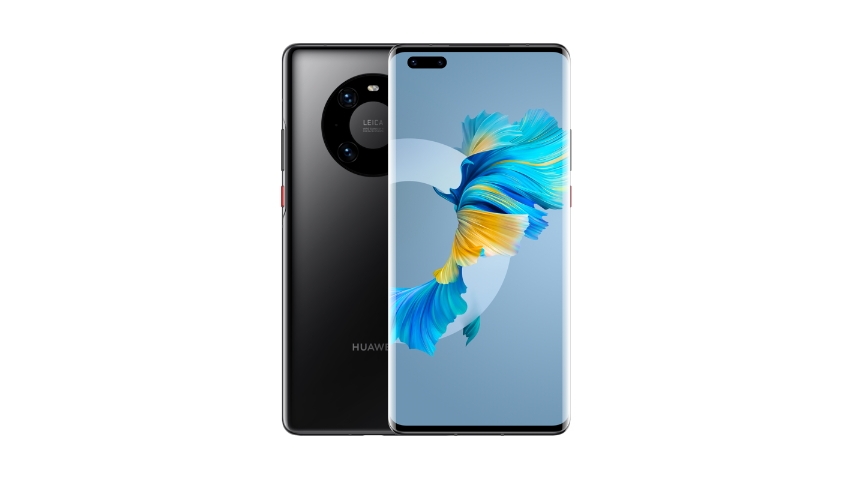
- HUAWEI Mate 40 Pro (8GB/256GB): £1,099/€1,199 (~$1,400)
HUAWEI is launching the Mate 40 Pro in the UK, Europe, and parts of Asia. The US will not be getting the Mate 40 Pro. If you’re a US resident and want to get your hands on one of these, you’ll need to import the device and pay the associated import taxes and shipping costs.
In the UK and Europe, the HUAWEI Mate 40 Pro is competing with ultra-premium flagships like the Samsung Galaxy S21 Ultra (£1,149/€1,259), OPPO Find X3 Pro (£1099/€1,149), and the iPhone 12 Pro Max (£1,099/€1,259). Over those, the Mate 40 Pro has competing camera hardware, along with more powerful charging. That said, the Mate 40 Pro lacks Google services, with all the associated complications.
Bar GMS, the Mate 40 Pro holds its own against the competition.
I wouldn’t be able to recommend this device to most people in the West, as everyone I know uses Google services in one way or another. Whether through third-party services that use GMS, or simply the Gmail or YouTube apps. You can run some of these in a browser, but that’s a compromise that few people paying over £1,000 for their smartphone are likely to want to make.
In almost every other respect, the Mate 40 Pro is fantastic. The cameras are among the best in any device. The performance is top-notch. The battery life is brilliant.
HUAWEI Mate 40 Pro: The verdict

In a world where the HUAWEI Mate 40 Pro had Google access and widespread availability, it would have been a contender for the best smartphone of 2020. If you somehow don’t care about any of the apps in the Google ecosystem, then that still applies. With fantastic cameras, a solid screen, great build quality, brilliant battery life, and top-notch performance, the Mate 40 Pro shines. However, with no discount, the £1,099 price point and lack of Google support mean almost everyone will want to look elsewhere for their flagship phone fix.
It’s a real shame that I can’t recommend this phone to everyone in the West, because it’s such a great device.